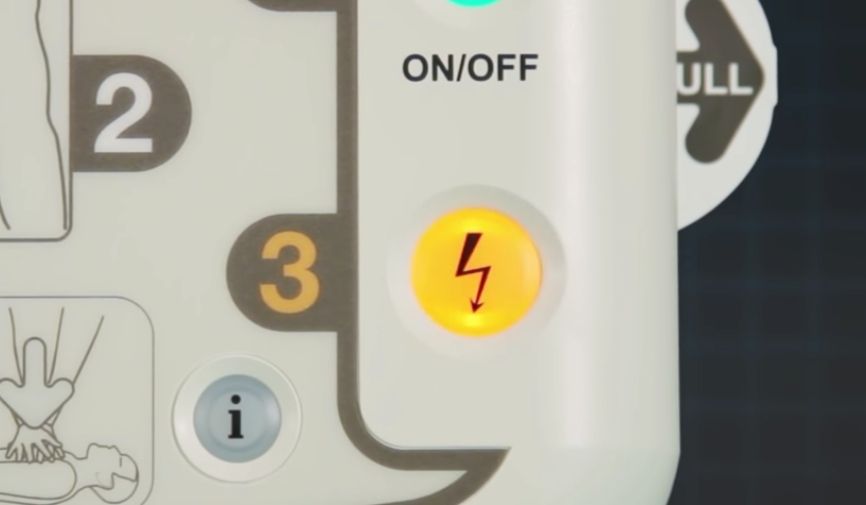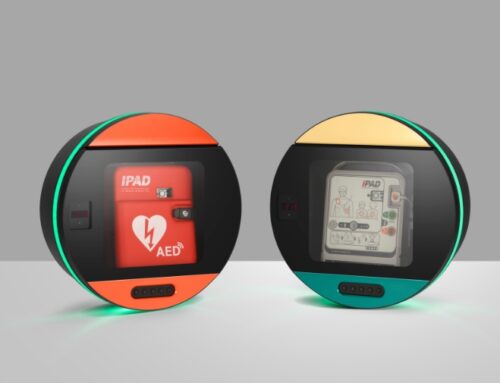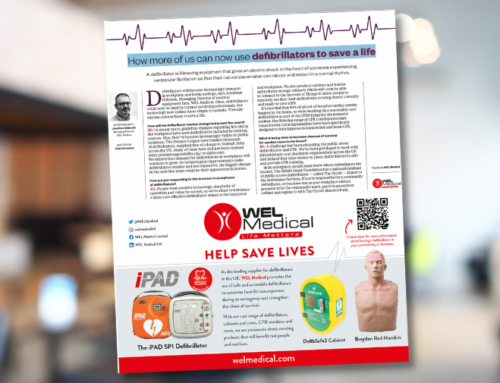[vc_row][vc_column][vc_column_text]Here at WEL Medical, we distribute both types of automated external defibrillator (AED): semi-automatic, and fully automatic. However, in recent months we’ve been seeing an increase in how often we get asked one particular question about them…
What is the difference between fully automatic and semi-automatic AED?
The terms ‘automatic’ and ‘semi-automatic’ make the differences between automatic vs semi-automatic AEDs seem far more pronounced and technical than they actually are. In truth, there’s only one significant distinction to make between fully automatic AEDs vs semi-automatic ones:
-A semi-automated external defibrillator has a shock button which you need to press yourself to deliver the shock when advised
-The fully automatic one doesn’t have a shock button, and instead delivers the shock on its own.
Of course, that begs a further question: if the two are so similar, why offer each option?
Unique features of fully automatic vs semi-automatic defibrillators
An automated external defibrillator is a vital piece of lifesaving technology. Every minute it’s not used during a cardiac arrest lowers the casualty’s chances of survival by up to 10%. Indeed, every single second saved during this time contributes to the chances of resuscitating someone successfully.
However, using a defibrillator for the first time can be a daunting prospect – particularly for someone with little to no lifesaving experience or training. The prospect of delivering an electric shock to someone isn’t something most people take lightly.
For that reason, even though semi and automatic defibs might be essentially the same in terms of technology and effectiveness, there is research that shows people using a semi-automated external defibrillator experience extended periods of hesitation.[/vc_column_text][vc_empty_space][vc_single_image image=”2620″ img_size=”full”][vc_empty_space][/vc_column][/vc_row][vc_row][vc_column][vc_empty_space][vc_column_text]This is because when the time comes to shock the casualty, the person in charge of the defib needs to press the button when the AED prompts them. By contrast, automatic AEDs take that action out of the operator’s hands. You simply put the gel pads on the casualty, turn the unit on, then step back when it commands you to.
In both cases, the person using the AED is working to save a life. But with the semi-automated external defibrillator the perception of responsibility seems to weigh heavier.
However, if you can get past that hesitation, one upside of using a semi-automated external defibrillator is that having a button actually allows you to deliver a shock slightly quicker. This is because, where the fully automatic model asks people to stand back and then counts down to shock delivery, with a semi-automatic one there is no such countdown.
The big benefit of this is that it allows you to deliver the shock the split second someone conducting CPR pulls their hand away – the absolute optimum point at which to shock a heart filled blood that’s been oxygenated by the CPR process. In other words, in the right hands, using a semi-automatic external defibrillator can actually be the most efficient way to save a life.
At a glance, the pros and cons of fully automatic vs semi-automatic defibrillators can be illustrated like this:
| Pros | Cons | |
| Semi-automatic AED | A semi-automated external defibrillator allows you to shock the casualty the split second someone delivering CPR stops pumping – which is the absolute optimum way to transition between CPR and defibrillation. | Rescuers in a state of shock or treating someone close to them could panic and hesitate, lowering the chances of a successful resuscitation. |
| Fully automatic AED | When the casualty is shockable, the unit gives a prompt to stand back and then delivers the shock automatically, removing hesitation from the equation. | Slightly slower to deliver a shock than a decisively-operated semi-automatic AED, meaning a gap of a few seconds between CPR and defibrillation. |
Our advice: trust your AED’s guidance
[/vc_column_text][vc_empty_space height=”16px”][vc_single_image image=”2645″ img_size=”full”][vc_empty_space][vc_column_text]As explained in-depth in our blog post ‘What Happens When You Use A Defibrillator?’ modern AEDs like the iPAD SP1 and iPAD SAVER give clear recorded verbal instructions that will walk you step-by-step through the defibrillation process.
After attaching the unit’s gel pads to a casualty showing no visible signs of life, a defibrillator will automatically scan them to see if they have a shockable heart rhythm. If the casualty does, then an automatic AED will prompt people to stand back then deliver the shock seconds later. A semi-automatic AED will instruct the operator to press the shock button themselves.
At WEL Medical, we work hard to ensure we keep a regular stock of what we believe are the most usable and accessible defibrillators available on the UK market – in particular, the market-leading iPAD SP1.
However, due to the ongoing worldwide semiconductor chip shortage, full automatic AEDs are significantly lower in stock than the semi-automatic models. That makes the iPAD SP1 Semi Automatic Defibrillator the most widely available high-quality defib of its kind currently widely available on UK shores.
With automatic external defibrillator prices being the same for both semi and fully automatic models, the real difference between the two is the user. So, if you need a defibrillator, our advice is – don’t delay! Instead, trust the AED, trust yourself, and go for the semi-automatic option.
Need a defibrillator now?
Now you’ve learned the difference between automatic vs semi-automatic AEDs, you’re all set. Visit our defibrillator shop page to pick the iPAD model that’s right for you.[/vc_column_text][vc_empty_space][/vc_column][/vc_row][vc_row][vc_column][vc_column_text]
Related articles
- Choosing The Right Defibrillator
- What Happens When You Use A Defibrillator?
- Frequently Asked Questions About Defibrillators
- World Heart Day: Heart Attack or Cardiac Arrest?
[/vc_column_text][/vc_column][/vc_row]





